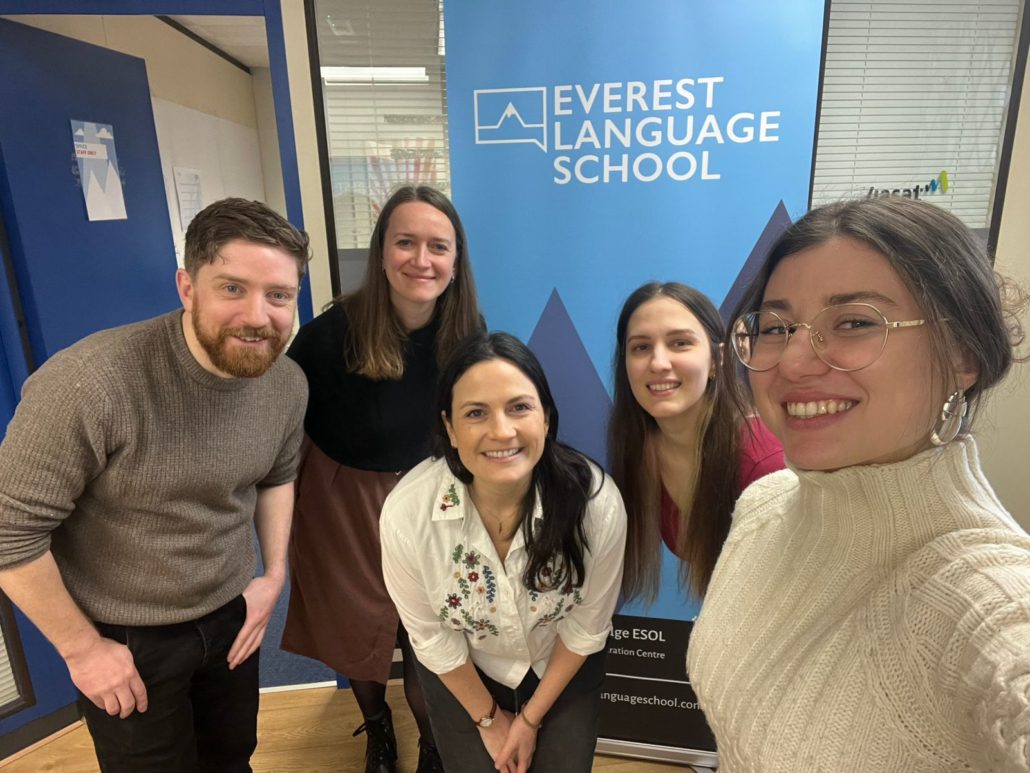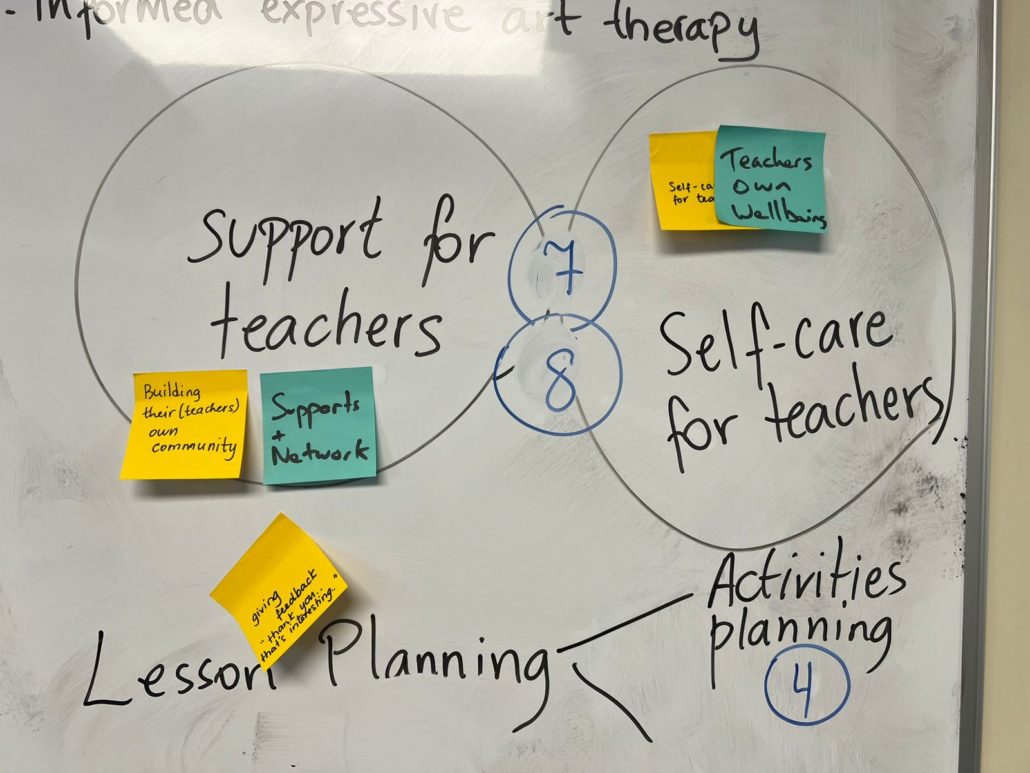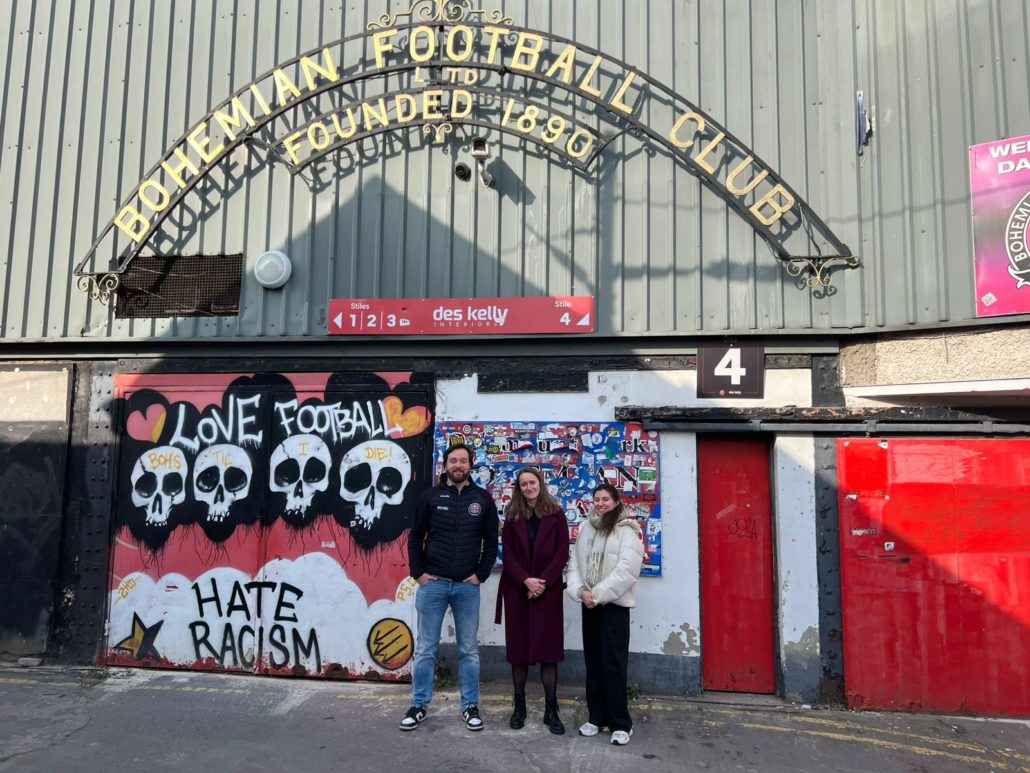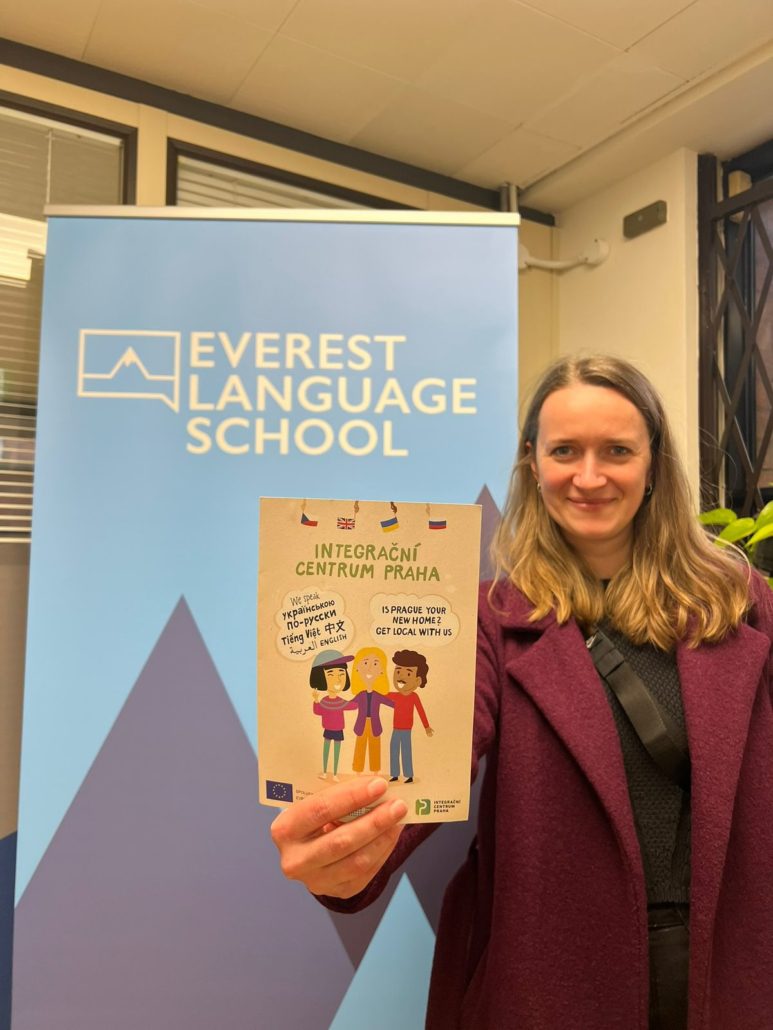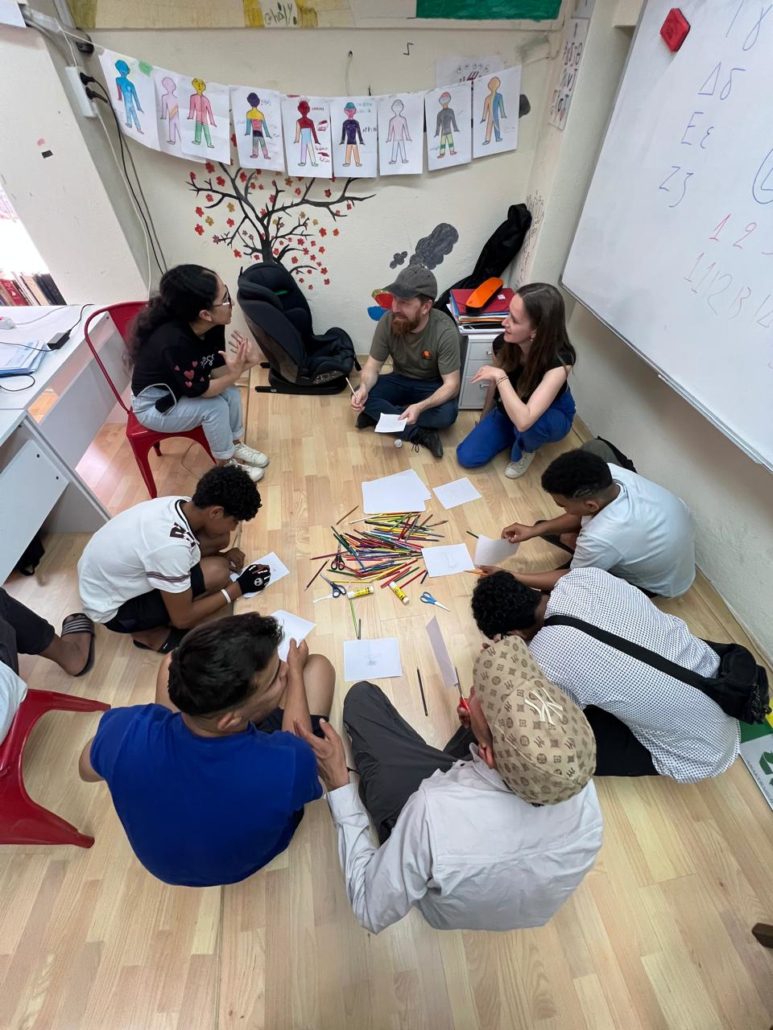A New Erasmus+ Project Will Teach Language Instructors to Use Art Therapy in Refugee Education
Dublin – Athens – Prague
How can you teach a language to someone carrying trauma from war or forced displacement? And how can teachers set healthy boundaries for themselves? These are some of the questions addressed by a new international project under the Erasmus+ programme, which our organization is proud to be part of. Together with our partners from Ireland and Greece, we are developing a course for language teachers that combines language instruction with elements of art therapy. Eva Šenkýřová, ICP’s Czech language course coordinator, represents our organization in the project. In this article, she introduces the project in more detail and shares insights from the projects meetings.
Course for Teachers Working with Traumatized Students
As part of this Erasmus+ initiative, which brings together organizations from different countries, we are involved in a unique effort to develop a course for language teachers working with vulnerable groups such as refugees or asylum seekers. “This is an international collaboration among three organizations. Our partner is Everest Language School from Ireland, and the third organization is AMAKA from Greece, which specializes in art therapy. ICP is contributing to the project as an expert in migrant integration,” explains Eva Šenkýřová.
The project aims to enhance pedagogical skills in applying therapeutic approaches to language education. The goal is to develop a two-week course and syllabus for language teachers working with people affected by war or other trauma related to displacement from their home country. “The syllabus will be adaptable to any language and can be used by language teachers working with refugees anywhere in the world,” Eva adds.
Art Therapy as a Bridge Between Learning and Understanding
She sees great value in combining teaching methods with art therapy techniques. “Art therapy-influenced activities can help work with topics that are sensitive for students within the context of a language course,” she explains.
A strong emphasis is placed on helping teachers better understand both the needs of their students and their own well-being. The aim is to teach them how to maintain emotional distance during lessons as a way to prevent burnout. “The course covers a wide range of topics—from the principles of communicative language teaching, integration of art therapy techniques, to cultural sensitivity. We also focus on teacher support, self-care, and setting personal boundaries when working with the target group,” she adds.
“It was an intense brainstorming session with representatives of all three organizations and the school’s teachers. We developed the course structure, syllabus, and key concepts we will be working with,” she shares.
The visit also included visits to two Dublin-based organizations that support refugees.
“We visited FIT (Fast Track into IT), which connects job seekers in the IT field with potential employers. At their local digital hub, we learned about English courses for Ukrainian refugees aimed at helping them find stable employment and integrate into Irish society,” says Eva. The second visit was to Bohemians FC Climate Coop, an initiative affiliated with a football club that runs various educational and community programs, including refugee courses that support integration.
What comes next?
The next project meeting will take place at ICP in Prague, where we will present our experience in migrant integration and showcase our services to colleagues from Ireland and Greece.
“The final stage of the project will be a training session for language teachers, where the developed teaching materials will be put into practice. The participants will then be able to pass on the programme to other teachers,” concludes Eva.

